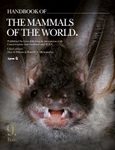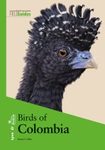By: Juan Benito(Author), Roc Olivé Pous(Illustrator), Luis M Chiappe(Foreword By)
272 pages, 250+ colour illustrations
![Birds of the Mesozoic Birds of the Mesozoic]()
Click to have a closer look
About this book
Customer reviews
Biography
Related titles
About this book
Birds are the most diverse tetrapod group today, but they have a rich and complex evolutionary history beyond that of their modern radiation. Appearing during the Jurassic, more than 160 million years ago, birds took to the skies and evolved into a plethora of forms during the Age of the Dinosaurs.
This comprehensive and up to date illustrated field guide, by palaeontologist Juan Benito and palaeoartist Roc Olivé, aims to illustrate in unprecedented detail the staggering diversity of avialans (modern birds and their closest fossil relatives) that lived from the origin of the group until the Mass Extinction that ended the reign of the non-avian dinosaurs 66 million years ago: the birds of the Mesozoic.
This beautifully illustrated field guide includes over 250 full-colour illustrations covering more than 200 types of bird that populated the world during the Mesozoic Era. In addition to detailed fact files on the diverse avifauna of the Mesozoic, including a description of each species, with information on its name, location, size, period, habitat, and general characteristics, Birds of the Mesozoic also seeks to explain the origins of the group and their evolution from other feathered dinosaurs up to the origins of modern birds in the Late Cretaceous. It also covers in detail multiple facets of their phylogenetic, morphological, and ecological diversity, and provides an introduction to bird skeletal anatomy and several of the most recent and cutting-edge methods palaeontologists use to reconstruct fossil bird colour, diet, and biology.
Easy-to-use and pleasant to contemplate, this book is a must for both bird and palaeontology enthusiasts!
Customer Reviews (1)
-
Good overview of avian paleontology and a visual catalogue of Mesozoic birds
By
Gehan de Silva Wijeyeratne
25 Aug 2023
Written for Paperback
There are two audiences for this book, the Birds of the Mesozoic (BoM). Firstly, those with a specialist interest in palaeontology who would like a catalogue of birds known from the Mesozoic. A catalogue of Mesozoic birds will be a moving target and the need for updated editions is no bad thing for a publisher. The second audience is people like myself, who don’t have a specific interest in palaeontology but have an informed layperson’s interest in evolution and the biology of living things, and especially so in relation to birds.
The first part of the BoM (pages 10 to 57) is a very useful overview of the evolution of birds and the evolution of key parts of their skeleton, especially those that support flight. The book begins by defining what is meant by a bird, as different concepts are in use when the term has to explain long-extinct ancestors. The authors define birds as the clade Aviale or avialans. The first figure, a simplified phylogeny shows the Aviale branching off from other lineages that led to other theropods, Dromaesauridae and Troodontidae. The first 3 figures which show phylogeny at different levels of detail are important for understanding the field guide section which is arranged in the order of the phylogeny with section dividers at higher-level taxonomic divisions for orders and key families. These sections are preceded by introductory text. The closer a lineage is to the original branching point, the more they are similar to the ground-dwelling dinosaurs from the movie Jurassic Park. Further down the phylogeny, is an important node, the Pygostylia and within it are the Ornithothoraces which represent the avialans with advanced wing apparatuses, well-developed sterna and pectoral girdles. This comprises the now-extinct Enantiornithes (the introduction explains why they are called opposite birds) and the Euornithes. The latter has the clade Neornithes which contains all of the living birds. The Enantiornithes and Euornithes are the last two clades to be covered in the field guide and not surprisingly the extinct forms look similar to many living birds. Other main introductory sections include ‘Plumage’ which explains the discovery of microscopic structures that help to reconstruct colours. The section on ‘Biology’ covers many aspects including the development of bones and why the fossil bones of young birds can be distinguished from mature adults.
A key point in all of the three books I have referenced is that birds as a vertebrate group are characterised by the ability for powered flight. This in turn has required profound changes to their skeletal structure in a few ways. Firstly, birds require powerful flight muscles. This has led to significant developmental changes of the furcula (wishbone), sternum (keel), pelvic girdle and forelimbs. They also needed to reduce weight. To achieve this, bones found in other vertebrates have been lost in birds, and some have been fused or modified in other ways. The internal structure of bones has changed to make them as light as possible filled with air spaces and internal bracing. Teeth which require strong and heavy jaw bones have been lost and the jaws replaced with a strong but light bill. All of this took tens of millions of years to happen gradually in a sequence that is reasonably evident in the fossil record. This is why sometimes a single important bone like a sternum is enough to place a fossil bird relatively accurately in the evolutionary pathway.
Skeletons comparing an Archaeopteryx with a modern pigeon (Figure 4) shows the transformation that has taken place over a large span of time. Understanding how the skeletal features of living birds help to anchor muscles and support their lifestyle informs the process of constructing what a fossil bird looked like when presented with one or more key bones. The osteology section also has many figures illustrating skulls, sternal morphology, shoulder articulation, the avialan coracoid, avialan furcula, humeral morphology, pelvic girdle, hind limb etc. As you read through terms such as furcula (wishbone) and coracoids (a bone that connects the keel to the vertebral column and wing joins) become as familiar as primaries and secondaries are to a birder. As you read about how the bones changed to support powered flight, you begin to understand why it has been said that for a human to fly it will require a keel two metres deep. The next time I carve a roast chicken, I will have a deeper appreciation of how a chicken’s bone structure came to be.
Finally, the introductory part contains a section on the ‘Bird Fossil Record’ which introduces aspects of geology and has a map showing each of the main fossil-bearing rock formations that have yielded Mesozoic bird fossils. For the faint-hearted, the first part of the book can feel like a crash course in medical forensics but if you have always been intrigued by how scientists can figure out so much from a few fossil bones the introduction is a marvellous exposition of how the science of palaeontology works. The introductory part of the book can very easily be spun off into another book with more diagrams and text boxes explaining the study of fossil birds.
The field guide part of the book arranges the Mesozoic birds into the taxonomic groups encountered in the first three figures in the introduction. The start of an order or family is flagged by a section in capital letters and typically a page of introductory text. The species accounts have a standard structure with text on the left facing the plates on the right, in the style of a modern field guide. Typically, three species are covered in a double-page spread. The text has standard headings for known material, morphology, plumage & soft tissue, biology and notes. I found it interesting to randomly read accounts. But for a fuller appreciation, you need to have read much of the introductory material.
The end sections include a list of fossil birds excluded from the book, a glossary and an extensive bibliography (a trademark of Lynx Edicions publications who do not skimp on this).
With living birds, a birder can easily tell if the illustrations bear a good likeness to the actual bird. With fossil birds, it requires additional skills to illustrate in a way which is true to what can be inferred through fossil material and the current state of science. From the acknowledgements, it is clear that the author and the artist Roc Olivé collaborated to make the reconstructions scientifically acceptable. They are also aesthetically pleasing. The field guide section would have been a labour of love for the artist and author to put together and it is a clever idea to present a catalogue of known fossils in a way that is lively and visually interesting. It is also an easier way to digest the phylogeny as presently understood however incomplete that would be.
Birds are quite a special group of vertebrates and this book helps to reinforce that.
13 of 14 found this helpful
-
Was this helpful to you? Yes No
Biography
Juan Benito is a vertebrate palaeontologist with a PhD from the University of Bath (UK) and currently based at the University of Cambridge. His research focuses on the morphological evolution of birds, and he studies both fossil and extant birds in order to better understand the origins of modern avian diversity. Juan has named new species of Mesozoic bird and is an author in several scientific publications in prestigious journals such as Nature, and his research has received widespread media attention. Juan has a keen interest in scientific outreach and has collaborated with museums and scientific exhibitions.
Roc Olivé Pous is an artist with a degree in Fine Arts from the University of Barcelona and specialized in palaeoart. Since 2018 he has collaborated with the Catalan Institute of Palaeontology. Illustrator of various books on prehistoric fauna, he has worked for Spanish, European and worldwide publishers, and has also illustrated numerous scientific articles. Roc is passionate about palaeontology, and this has led him to create initiatives and courses related to art and palaeontology through the Catalan Institute of Palaeontology and the scientific outreach platform "Illustraciencia".
By: Juan Benito(Author), Roc Olivé Pous(Illustrator), Luis M Chiappe(Foreword By)
272 pages, 250+ colour illustrations






































